Nationality English Children Veronica Whall | Education Royal Academy of Arts Name Christopher Whall | |
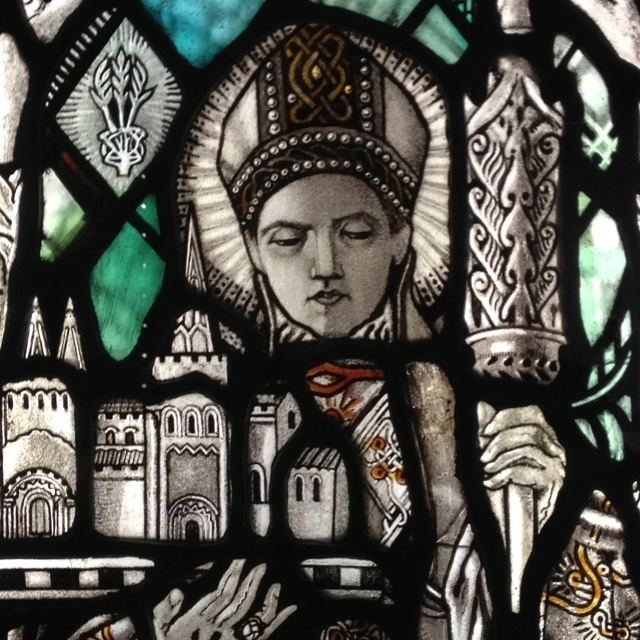 | ||
Notable work Stained glass windows, which often served as war memorials Died December 23, 1924, Gunnersbury, London, United Kingdom Books Stained Glass Work: A Text-book for Students and Workers in Glass | ||
Christopher Whitworth Whall (1849–1924) was an English stained glass artist who worked from the 1880s and on into the 20th century and is widely recognised as one of the key figures in the modern history of stained glass.
Contents
- Early life and studies
- Career
- Arts and Crafts Movement
- Work relationships
- Whall Whall
- Stained glass
- The move to Ravenscourt Park
- Stained Glass Work Whalls book on his craft
- Some artists influenced by Whall
- Personal life
- References
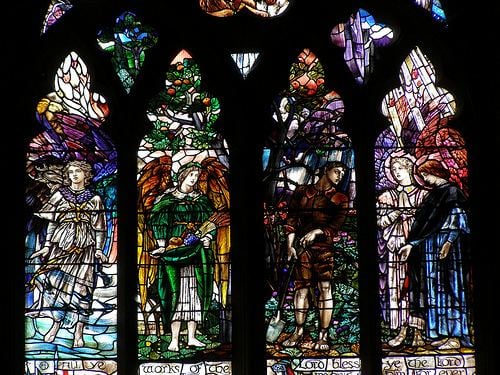
One of Whall's best known dictums was "the design of the window must relate to the architecture of the frame".
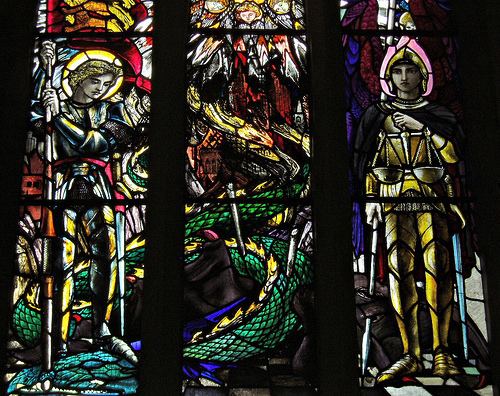
Early life and studies
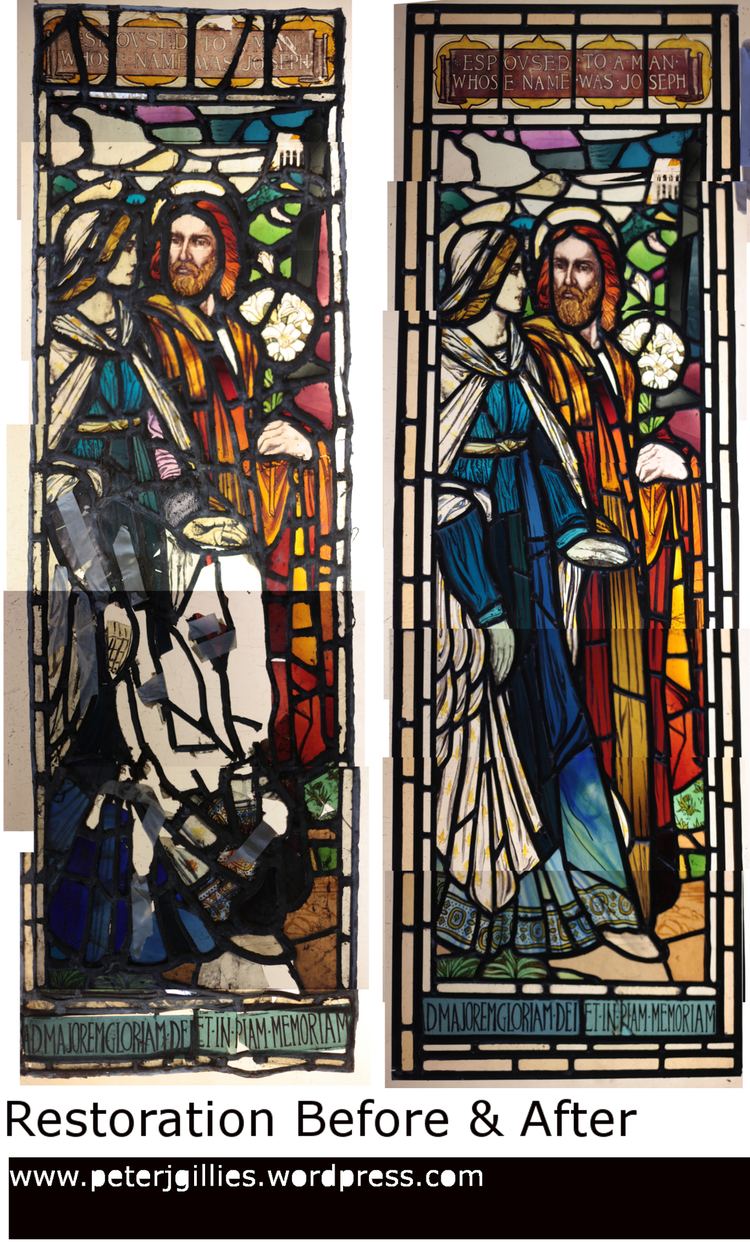
Christopher Whall was born in the rectory at Thurning, Northamptonshire, where his father was the rector. In 1863 he was sent to Rossall School in Lancashire. The drawing master there was William Coulter of the Royal Hibernian Academy. He left Rossall School in 1865, and in 1867 enrolled as a probationer at the Royal Academy Schools. On 8 January 1868 he was admitted as a student there - which was incidentally a professional path taken against his parents' wishes.
Career

In 1874 Whall met the designer, A. H. Mackmurdo, founder of the Century Guild, and through him Selwyn Image, and contributed to the Guild's publication, Hobby Horse. In 1875 and 1876 he exhibited at the Royal Academy. At this time he gained the patronage of a Hanoverian, Baroness von Boselager, who gave him funds to travel to Italy, where he was to stay for almost three years, travelling in central and northern Italy, studying architecture and paintings. In 1878 in Lucca he converted to Catholicism. Before going to Italy he had sought work as a portrait painter and as a studio assistant to other artists, but had had little success.

When he returned to London in 1879, almost penniless, he was befriended by the Rosminian Order of Charity at St Ethelreda's Church in Ely Place, Holborn and became a lay member of that Order. At St Ethelreda's he designed the side windows in the upper chapel, these windows being made by W.G. Saunders. By 1882 he was to leave the religious community at Ely Place, move to No.18 Wharton Street in Clerkenwell and work as an illustrator of newspapers, novels and children's books, as well as assisting other painters and giving drawing lessons. He carried out designs during this period for several stained glass makers including John Hardman Trading Co. Ltd as well as James Powell and Sons.
Arts and Crafts Movement
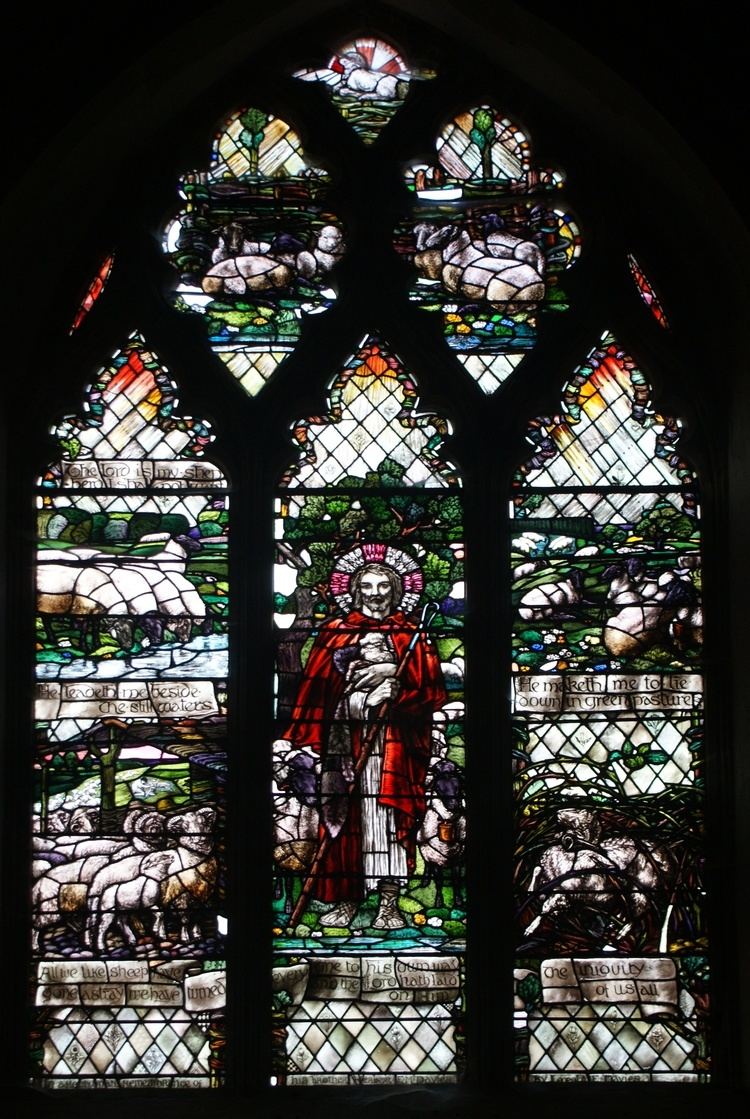
Whall's career as an independent designer and maker of stained glass began in the late 1880s. This coincided with the emergence of the Arts and Crafts Movement through bodies such as the Art Workers' Guild and the Arts and Crafts Exhibition Society, in both of which he was active. Indeed through James Powell and Sons he was to exhibit at that Society's exhibitions at the New Gallery in 1888 and 1889. The architects with whom he was to work at Holy Trinity Church, Sloane Street, John Dando Sedding and Henry Wilson were also prominent within the Movement. It was John Dando Sedding who was to give Whall his first independent commission, for the Lady Chapel East window of St Mary's church in Stamford, Lincolnshire.
Whall’s participation in the early activities of the Arts and Crafts Movement came soon after a life-changing event that had taken place in 1887. In that year he had converted the cow-shed at his cottage in Dorking into a workshop, where he set about learning all the processes of the craft: cutting, painting, firing and glazing, so that, in future, no part of the making of his windows would be beyond his control. This was a direct protest against the division of labour, then almost universally prevalent among commercial manufacturers, which Whall and others saw as incompatible with the production of stained glass as an art rather than simply a trade.
Work relationships
During his time at Dorking, Whall was assisted by Louis Davis and Reginald Hallward, both of whom were to have distinguished careers as stained glass artists.
For the decade after the Whalls left Dorking in 1896 he had no premises of his own for firing and glazing his stained glass, and during this period he worked closely with the firm of Lowndes and Drury and it was in their workshops that all his windows were fabricated between 1897 and 1906 (either at Park Walk in Chelsea or at Lettice Street). Lowndes and Drury was founded in 1897 by the artist Mary Lowndes, and Alfred John Drury with the aim of providing independent designer- craft workers with the necessary facilities to carry out their stained glass commissions.
At various times, particularly in the 1880s and 1890s, Whall was commissioned to design windows by James Powell and Sons.
Whall & Whall
In 1922 in conjunction with his daughter Veronica he formed the company of Whall & Whall Ltd., which carried on long after his death. There are two windows in St Peter's Church in Swinton, near Manchester which Clare Hartwell and Nikolaus Pevsner attribute to "Whall and Whall" in their volume "The Buildings of England. Lancashire: Manchester and the South-East". They describe the windows, which are situated at the West end of the North Aisle, as having "beautifully drawn figures on a pale ground."
Stained glass
Whall was also influential as a teacher, running stained glass classes at the Central School of Arts and Crafts in 1896, and in 1898 at the Royal College of Art in London, where students were encouraged to relate design to architecture. He was elected to the Art Workers Guild in 1889 and served as Master in 1912. He participated in the Ghent International Exhibition in 1912 and that in Paris in 1914. His work was shown at the Royal Academy's Arts and Crafts Exhibition of 1916.
His pupils and colleagues included his daughter Veronica Whall (1887–1967). A good example of his daughter's work is her window in the Lady Chapel of Our Lady of Grace and St Teresa of Avila Church in Chingford, London. Described in "The Buildings of England- London 5: East" by Bridget Cherry, Charles O'Brien and Nikolaus Pevsner, ISBN 0-300-10701-3 as "subtle Lady Chapel window of 1939. Delicate figure of Virgin and Child largely white against a band of blue; intricately leaded."
The move to Ravenscourt Park
In 1907, Whall took over the furniture-making workshops at 1 Ravenscourt Park, Hammersmith, formerly used by his friend Charles Spooner (1862–1938), the architect. Spooner converted the upper floor into a cartooning and glass-painting studio, complete with tall windows, and the lower floor into a fully equipped workshop with a kiln, glass-racks and glazing benches.
"Stained Glass Work". Whall's book on his craft
Whall expounded his philosophy of craftsmanship in his book, "Stained Glass Work", published in London by John Hogg in 1905.
Some artists influenced by Whall
Although there is no record of Whall having undertaken commissions in Ireland, except for Loughrea Cathedral, it does seem that he can be linked to the early 20th century stained glass revival in that country. The artist Wilhelmina Geddes was certainly influenced by Whall. Geddes was the artist who created the work "The Crucifixion" in St Luke’s Church in Wallsend.
It was in September 1901 that Alfred Ernest Child arrived in Dublin to take up the post of Instructor in Stained Glass at the newly reorganised Dublin Metropolitan School of Art and it seems that Whall was one of those who were behind this appointment along with the painter Sarah Purser, the poet W.B. Yeats and Edward Martyn the art critic. Child had been trained by Whall and would try to bring Whall’s principles to a new generation of Irish artists. Child and his artist friends aimed to set up a workshop similar to that formed by Mary Lowndes and Alfred Drury in London and in 1903 Sarah Purser set up "The Tower of Glass" (in Gaelic "An Túr Gloine").
Somewhat further afield, it was Ralph Adams Cram, the architect, who introduced Whall’s work to the United States in the period 1906-1910, this at All Saints Ashmont, Boston and Boston’s Church of the Advent. For the Church of the Advent, Whall completed five windows depicting the five regions of the early church, starting with the first window on the East end of the South Nave wall with St. Ignatius of Antioch representing the Syrian Church and West of that St.Athanasius representing the African Church. On the North side starting at the West end is St. Ambrose of Milan for the Latin Church, then St. Chrysostom for the Greek Church and finally St. Columba, symbolising the Celtic Church.
Personal life
When his father died in 1874, Whall moved with his mother to No 4, Hyde Side, Edmonton. He married Florence M. Chaplin on 10 November 1884. In 1884 the family moved from London to Stonebridge, near Dorking, where they kept a small-holding with a cow, a pig and some chickens. Their five children were born between 1885 and 1894. Christopher John was born in 1885 and their daughter Veronica in 1887. The other children were Hew Bernard, Audrey (who died in infancy) and Louis.
